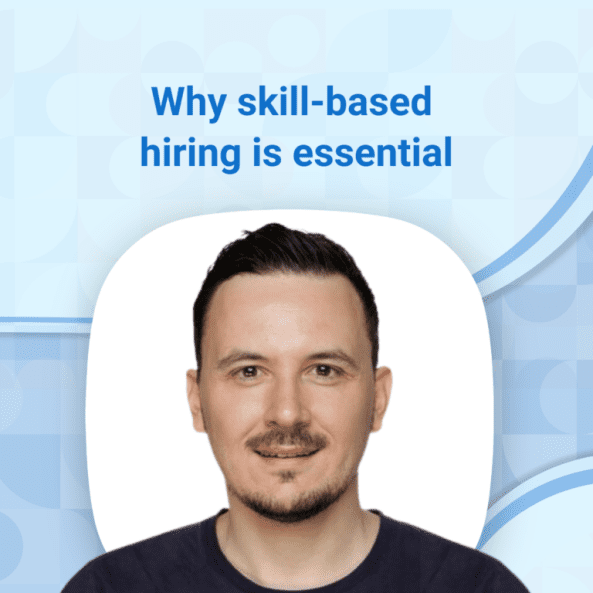I’ve come to realize that the true measure of success for TA professionals is all about the quality of hires.
It’s not just about filling positions; it’s about the lasting impact these individuals have within their roles.
The contributions these new hires make are the benchmarks by which every client will remember you for.
This recognition has opened doors for me to share why it’s high time we shift from traditional pedigree recruiting to skill-based hiring.
It’s a game-changer, and I’m excited to share why!
What is pedigree recruiting?
Lately, I’ve come to question pedigree recruiting.
This traditional hiring method focuses on a candidate’s formal education and previous employers rather than their actual abilities or how well they might do the job.
It’s easy to be impressed by a degree from a top university or a stint at a famous company, but these factors don’t necessarily predict success in a new role.
Recruiters often feel the weight of their decisions, knowing that their choices affect not only their clients but their careers. And this pressure can lead to a reliance on the supposed safety of a candidate’s ‘pedigree.’
But, relying on resumes alone can be misleading because they don’t show the complete picture and are subject to our own unconscious biases.
What’s more, the global talent pool is changing.
Many countries are facing a talent shortage, yet the demand for skilled workers is constantly increasing.
If we don’t adjust our hiring strategies to look beyond traditional ‘pedigree’ markers, we risk facing a talent shortage that could impact business performance, even as we continue to develop new technologies.
Why pedigree recruiting doesn’t equate to high performers
Instead of looking at where someone went to school or which companies they’ve worked for, zero in on what they can actually do.
Here’s why skills matter: They’re the tools a person uses to get a job done.
By breaking down jobs into specific skills, companies can get clear on what’s needed for each role.
Skills can be technical, like coding, or soft, like communication–and they’re all important!
Good predictors of future job performance include:
- Cognitive ability assessments:
- Recognizes top predictors of job performance for all roles and industries.
- Include evaluations of communication, computation, and analytical skills.
- Technical or functional skills tests:
- Target specific job-relevant tasks (like coding challenges).
- Helps determine a candidate’s proficiency and seniority level.
- Creative problem-solving evaluations:
- Scenario-based tests to gauge a candidate’s reasoning approach.
- Assess if candidates can think critically, ask the right questions, and challenge given information.
Focusing on skills means less bias and a clearer view of what someone needs to succeed in a job.
It also means companies can hire the best people from anywhere in the world, making their talent pool richer and more diverse.
But here’s the thing–hiring is never foolproof.
Even the most skilled candidates are human, and jobs, especially in fast-paced environments, are constantly changing.
Why skill-based hiring is just the beginning
Skill-based hiring helps you attract, identify, and assess great talent, but this is just the beginning.
Your ultimate goal is to become a skill-led organization that develops, promotes, compensates, and retains your employees based on their skills.
In order to do that, organizations need to support the transition into a skill-led organization by encouraging constant upskilling and training.
This support is a must to ensure an engaged, agile, and innovative workforce that drives productivity and profitability for your organization.
Companies need to build a taxonomy focusing on the necessary skills needed right now. They need to ask themselves what their skills gaps are and what future skills they need.
Also, this taxonomy must be regularly updated and maintained to achieve the desired results.
Moving from a pedigree to a skills-first approach is a new but intelligent move for keeping pace with what the job market now demands.
So, it’s your opportunity to create a workforce with the spotlight on real-world abilities and the promise of growth.
Happy recruiting 🙂

